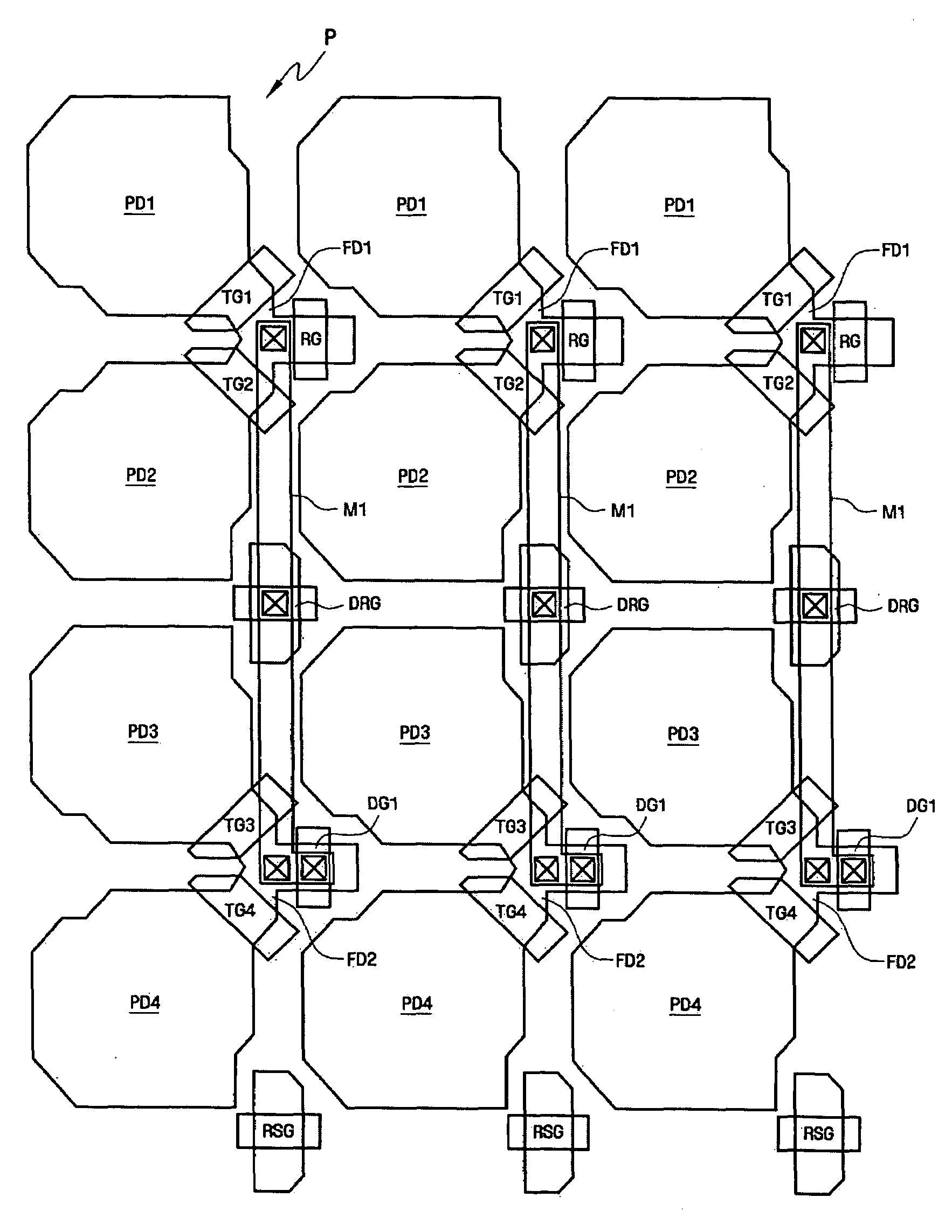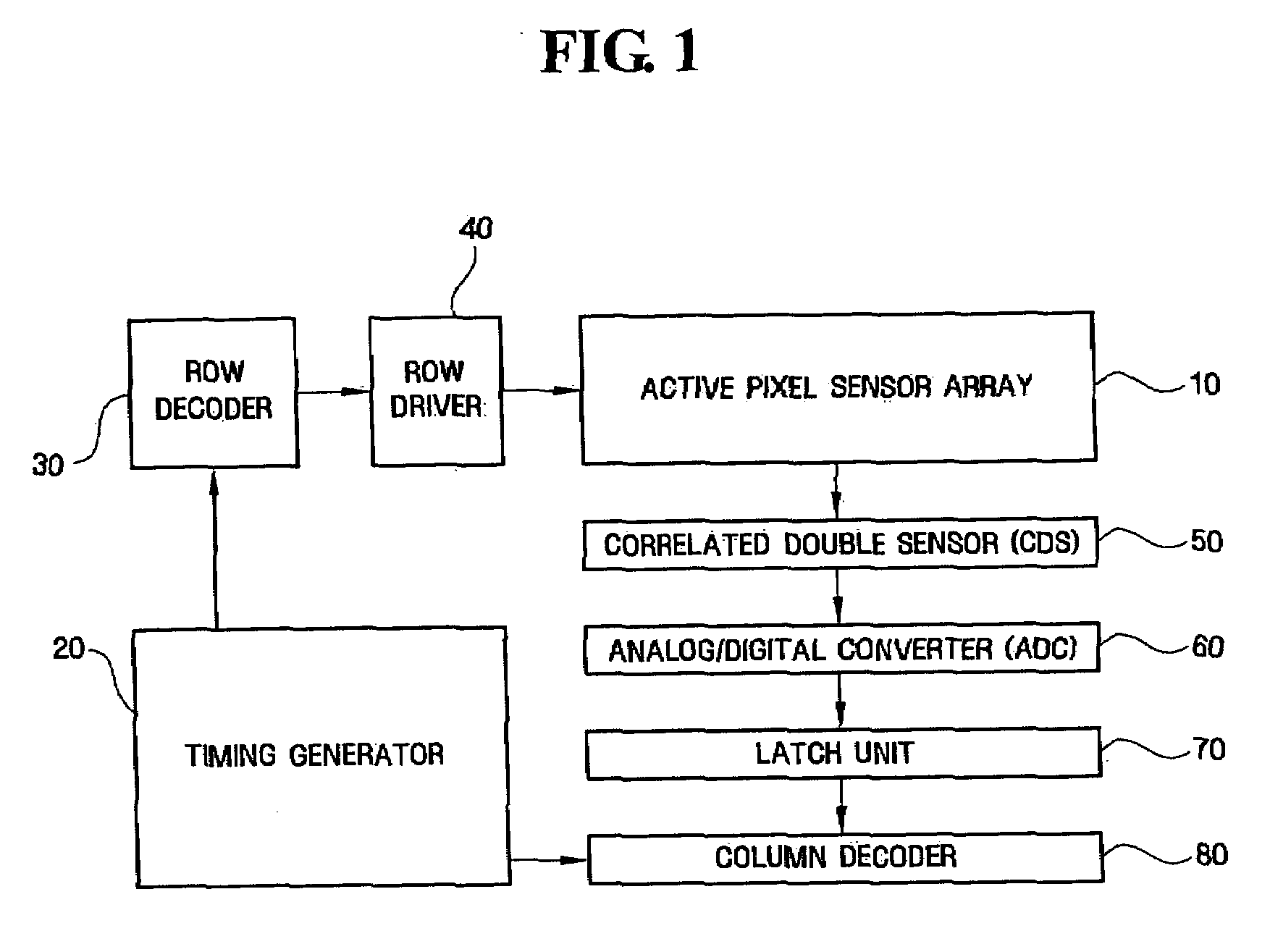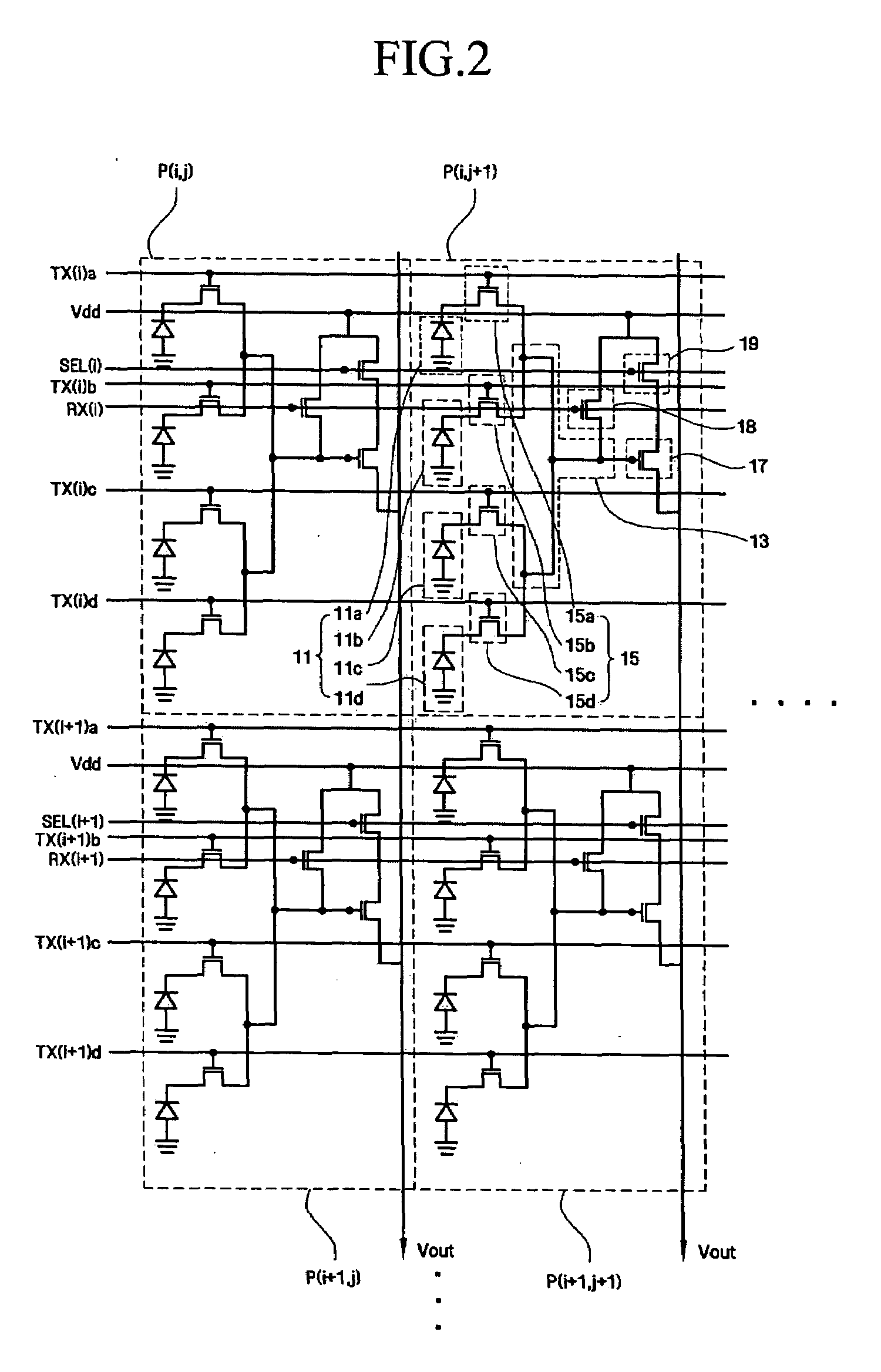Shared-pixel-type image sensors for controlling capacitance of floating diffusion region
a technology of capacitance control and image sensor, which is applied in the field of image sensors, can solve the problems that the image sensor may consume a relatively low amount of power, and achieve the effects of increasing the fill factor, increasing the area of the photoelectric conversion element, and increasing the area
- Summary
- Abstract
- Description
- Claims
- Application Information
AI Technical Summary
Benefits of technology
Problems solved by technology
Method used
Image
Examples
first embodiment
[0065]Referring to FIGS. 3 and 4, the APS array of the image sensor according to the present invention may have the following characteristics. A first active A1 and a second active A2 may be repeatedly arranged. More particularly, pairs of one of the first actives A1 and one of the second active A2 may be repeatedly arranged. Each of the first actives A1 may correspond to a region where two photoelectric conversion elements PD1 and PD2 sharing a first floating diffusion region FD1 may be disposed. Each of the second actives A2 may correspond to a region where two other photoelectric conversion elements PD3 and PD4 sharing a second floating diffusion region FD2 may be disposed.
[0066]Third and fourth actives A3 and A4, which may serve as two independent reading element actives, may be allocated to each pair of first and second actives A1 and A2. That is, in some embodiments of the invention, the first to fourth actives A1, A2, A3, and A4 may form a unit active of one of the 4-shared p...
second embodiment
[0089]Referring to FIG. 5, in each of the 4-shared pixels P, which may be a repeated unit in an APS array of an image sensor according to the present invention, a dummy gate DG2 forming an upper electrode of the MOS capacitor may extend to cover an entire or substantially an entire axis active b of the second active A2.
[0090]That is, in such embodiments of the invention, the MOS capacitor may include a first electrode that may be made of a substrate region of a side adjacent to the second floating diffusion region FD2, and a second electrode that may be made of the gate insulating film laminated on the first electrode, and the dummy gate DG2. The dummy gate DG2 may be disposed on the gate insulating film and may extend to cover the entire or substantially the entire axis active b of the second active A2.
[0091]If the dummy gate DG2 of the MOS capacitor extends to cover the entire axis active b of the second active A2, a capacitance may be proportional to areas of the upper and lower ...
third embodiment
[0094]In the 4-shared pixels P that may be repeated unit in an APS array of an image sensor according to the present invention, a first active A1′ and a second active A2′ form the unit active of the 4-shared pixel P.
[0095]In the 4-shared pixel P, two photoelectric conversion elements PD1 and PD2, the first floating diffusion region FD1, and the plurality of reading elements may be disposed in the first active A1′. The other two photoelectric conversion elements PD3 and PD4, the second floating diffusion region FD2, and the MOS capacitor may be formed in the second active A2′. Each of the first active A1′ and the second active A2′ may correspond to a one-axis-merged dual lobe-typed active.
[0096]That is, in each of the first active A1′ and the second active A2′, the dual lobe actives a may be merged with one axis active b′ by a connection active c. In this case, the dual lobe active a of the first active A1 may correspond to a dual photoelectric conversion element active where the two...
PUM
 Login to View More
Login to View More Abstract
Description
Claims
Application Information
 Login to View More
Login to View More - R&D
- Intellectual Property
- Life Sciences
- Materials
- Tech Scout
- Unparalleled Data Quality
- Higher Quality Content
- 60% Fewer Hallucinations
Browse by: Latest US Patents, China's latest patents, Technical Efficacy Thesaurus, Application Domain, Technology Topic, Popular Technical Reports.
© 2025 PatSnap. All rights reserved.Legal|Privacy policy|Modern Slavery Act Transparency Statement|Sitemap|About US| Contact US: help@patsnap.com



